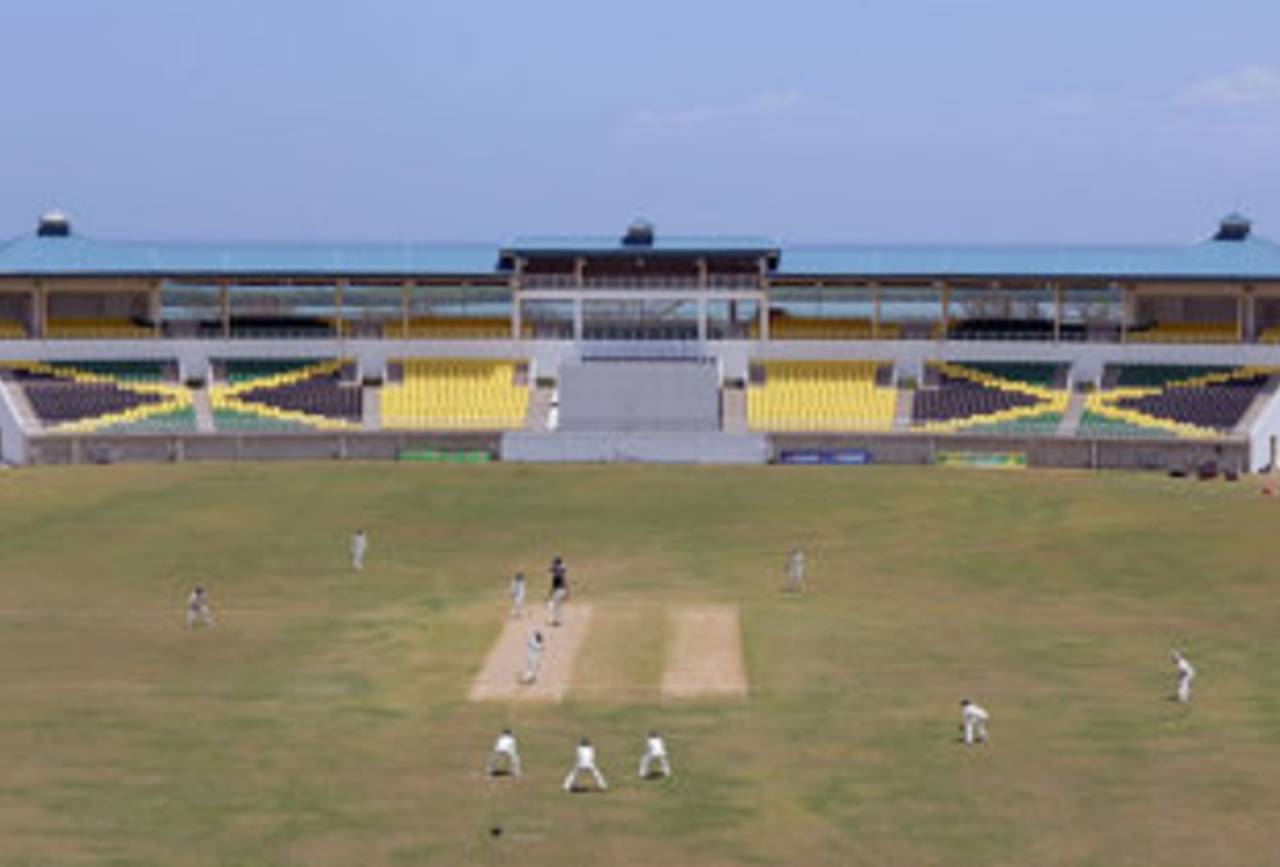The couple of matches at the Greenfield Stadium in Trelawny, Jamaica, leading into New Zealand's three Tests in the Caribbean next month, carry potentially more significance than the meaningless exercises such warm-ups are usually do.
With the international calendar now chock-a-block with Tests, ODIs, T20s and an accommodating window for the Indian Premier League, some teams have abandoned warm-ups altogether.
New Zealand went straight into the internationals on their last tour of the West Indies, in 2012; they were beaten in the two T20s, four of the five ODIs, and both Tests.
The days of prolonged tours, including valuable first-class clashes against states, counties, provinces and the like, passed into history a quarter century ago.
So what makes New Zealand's appearance at Trelawny different?
For one, it's the return of cricket to the 10,000-seat facility that was specifically built for the 2007 World Cup with a US$9 million loan to the government from China.
The tournament was the biggest sporting extravaganza ever held in the cricketing Caribbean. It was launched against a backdrop of performances by internationally famous calypso, soca and reggae stars, and over 2000 dancers, the mandatory fireworks display, and speeches by Sir Garry Sobers and West Indian prime ministers. Four group practice matches followed.
It has sat virtually barren ever since, its outfield reportedly a grazing pasture for goats. As Sabina Park and the National Stadium, the homes of Jamaica's premier sports, respectively cricket and football, and track and field, are situated in the capital, Kingston, Trelawny was to be the multi-purpose centre for the north of the island. The proximity of the resort towns of Montego Bay, Ocho Rios and Falmouth added to its attraction.
It hasn't worked out that way. The stadium has hosted a solitary cricket match, between the Australians and Jamaica over three days, in May 2008. A few Under-17 football World Cup qualifiers were played there; for three years, the Jamaica Jazz & Blues Festival was its most popular event.
Otherwise it has been enveloped in controversy. Wayne Cummings, a former president of the Jamaica Hotel and Tourist Association (JHTA), echoes the public consensus that it is "the biggest waste of money".
There was official talk of enticing Major League Baseball franchises from the US for spring training and of the addition of a basketball facility. Neither got anywhere.
Given the recommendation of its new director of cricket, Richard Pybus, that the West Indies Cricket Board (WICB) double its annual first-class and Fifty50 seasons, along with the presence since last year of the vibrant Caribbean Premier League (CPL), a properly maintained Greenfield can be a worthy second venue for Jamaica.
There was official talk of enticing Major League Baseball franchises from the US to Trelawny for spring training and of the addition of a basketball facility. Neither got anywhere
Apart from finally reviving the stadium, the New Zealand matches, even condensed into two and three days, are a gear change for the several players on both sides who have been confined over the past two and a half months to the abbreviated game in the World T20 and the IPL.
For West Indies, they augment a training camp that starts May 19 so that the fitness and form of key players can be further assessed (Chris Gayle, Marlon Samuels, Dwayne Bravo, Kirk Edwards and Kemar Roach have all been recently sidelined by various ailments).
It is also an opportunity to see how the youthful talent from the recent first-class season responds to international opposition.
Jermaine Blackwood, 22, the tournament's leading run scorer; Shacaya Thomas, 25, the belligerent opener who was the only other batsman to pass 500 runs; and Sunil Ambris, 21, with two hundreds in his debut season, are among the next generation responsible for moving into the Test team whenever long-timers such as Shivnarine Chanderpaul, 39, and Gayle, 34, come to the end of the line.
Whether Greenfield continues to be used for the purpose for which it was intended and that its two matches are not transformed into the usual farce of "15 playing, 11 batting, 11 bowling" depends on the Jamaica government in cooperation with the Jamaica Cricket Association (JCA) and the WICB, both under new leadership.
It is a vital responsibility.
There is another possible spin-off from developments in Jamaica. Given the rivalry between the two countries, the largest in the cricketing Caribbean, this might just be the stimulus the Trinidad and Tobago government needs to complete the Brian Lara Stadium in Tarouba, in the south of the island, after seven years of monumental cost overruns, charges of corruption, and public discontent.
That stadium's history is even more depressing than Greenfield's. Named in honour of the batting genius who is Trinidad and Tobago's most celebrated sportsman, the stadium, along with a cricket academy, an Olympic-size swimming pool and a cycling track, began to be constructed in 2006 through a government contract with its Urban Development Corporation (Udecott). The originally projected cost was $141 million; staging matches in the World Cup a year later was the aim.
That deadline came and went. Status to host practice matches for the World Cup was withdrawn. One government minister after another declared that the project would be completed within a year.
It still hasn't been. The main structure was erected but after years of neglect began to deteriorate as rapidly as costs escalated. The latest estimates are that $183 million has already been spent; another $31 million is required if the job is to be finished.
In his report as head of a commission of inquiry into Udecott, Professor John Uff, a Queen's Counsel, described the stadium project as "nothing short of scandalous… a disaster… a national disgrace".
If it turns out to be now too late, as seems likely, the demise of what is potentially a world-class cricket venue would be an embarrassing shame.
At least Jamaica have got their equivalent going once more.
Tony Cozier has written about and commentated on cricket in the Caribbean for 50 years
